Gemlike Sweet Black Soybeans called Kuromame are a classic dish for Osechi Ryori or traditional Japanese New Year foods. The shiny beans symbolize good health in the new year. Try my pressure cooker recipe to shorten cooking time without sacrificing flavor.
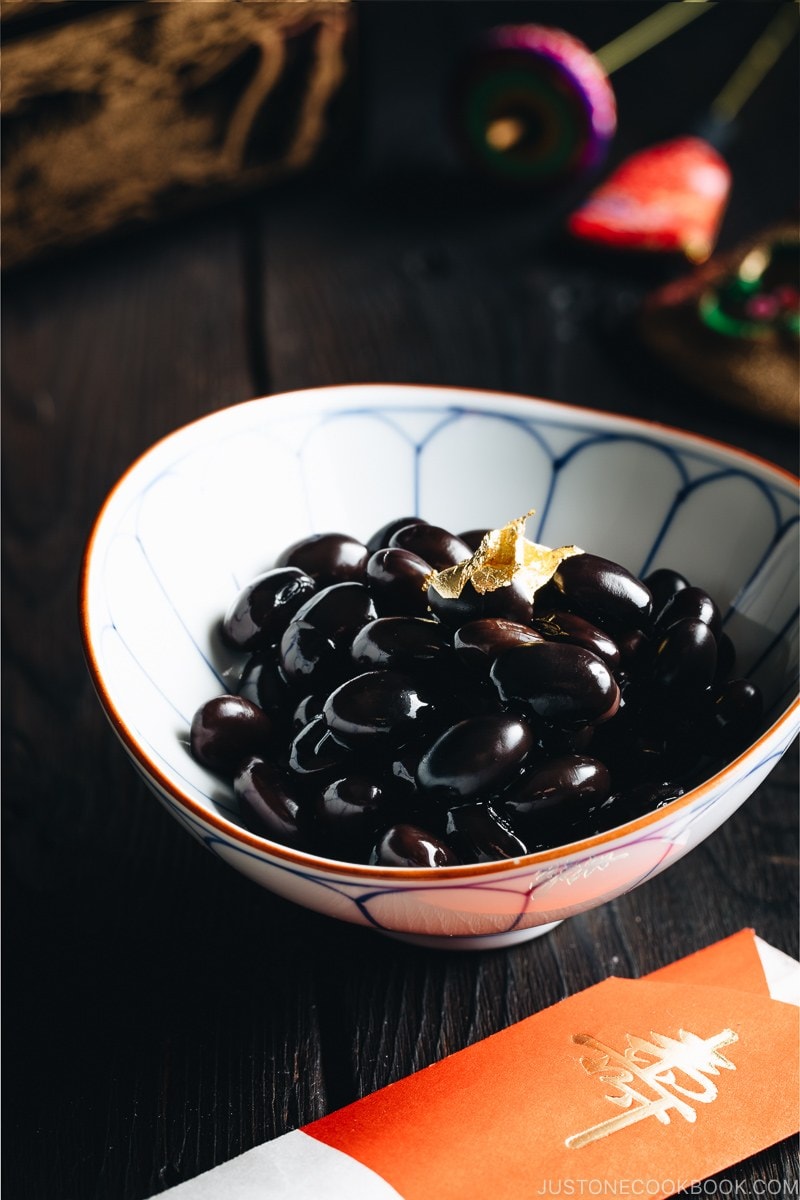
One of the easiest dishes you can make for the Japanese New Year (Oshogatsu) is Kuromame (黒豆) or sweet black soybeans. The soybeans are typically simmered on low heat over a long period of time in a syrup. To shorten the cooking process, we’ll cook the soybeans using a pressure cooker. This Instant Pot Kuromame will save you hours in the kitchen, so you can make one more dish for Osechi!
What is Kuromame?
Kuromame (黒豆) is literary black (黒) soybeans (豆) in Japanese. The soybeans are simmered in a sauce made of water, sugar, soy sauce, and salt, and then let soak for another day to yield a strikingly glossy and black appearance. They are delightfully sweet with just a tinge of savory flavor. It is one of the “sweet” side dishes served along with other savory osechi foods.
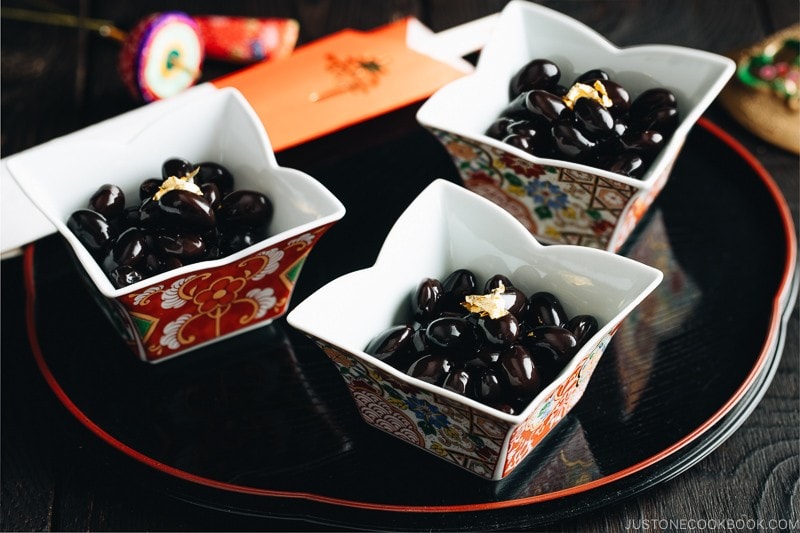
When making kuromame, we place a great focus on the color of the black soybeans. The shinier and more intensely black they are, the higher the praise. In addition to the color, it is also important that the skin of the soybeans is not wrinkled. Shiny, pearl-like black soybeans are a subtle yet important piece of osechi.
The Secret to Enhancing the Color of Black Soybeans
Dried beans need to be soaked before cooking. When you soak black soybeans in water, the water turns dark purplish and the beans lose their color and become brown or reddish. Once you simmer the beans in the same water, they will regain their black/black-ish color.
You may wonder how to make the black soybeans even MORE black. The answer is rusty iron nails. I know, I’m about to get some raised eyebrows…
Dubious it may sound, this technique has been passed down for generations. Why rusty nail? Well, the rust (iron oxide) from nails has a chemical reaction with anthocyanins (chemicals that are located in the skin of black beans), which makes the beans dark. What people do is to clean the nails and wrap in cheesecloth to soak with the beans.
Are there any cleaner and better “food-safety” alternative? Absolutely!
- Use a cast iron deep pot. A cast-iron skillet is a bit too shallow.
- Buy this Lucky Iron Fish® (not sponsored), which is available on Amazon.
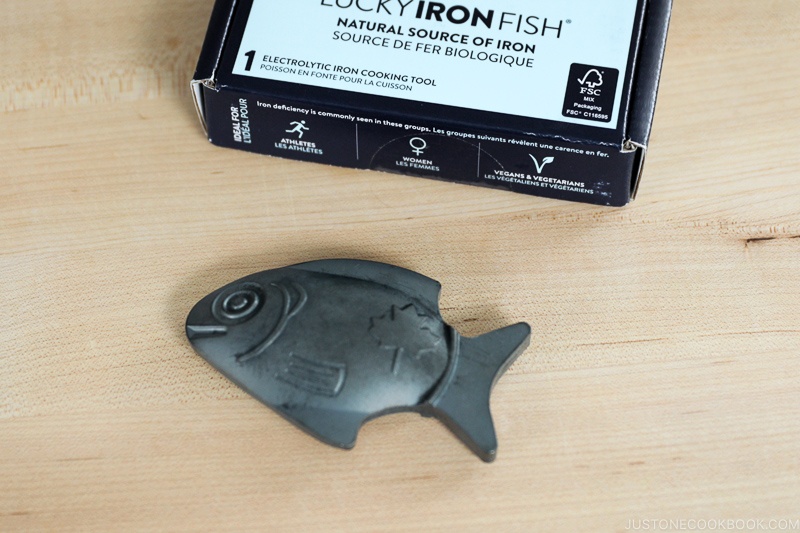
The Lucky Iron Fish is a small iron cooking tool that infuses your meals with a healthy amount of natural iron to help prevent iron deficiency and anemia. It’s especially perfect for athletes, vegetarians, vegans, women, and kuromame makers like us!
All you need to do is to soak the Lucky Iron Fish in the water along with the black soybeans.
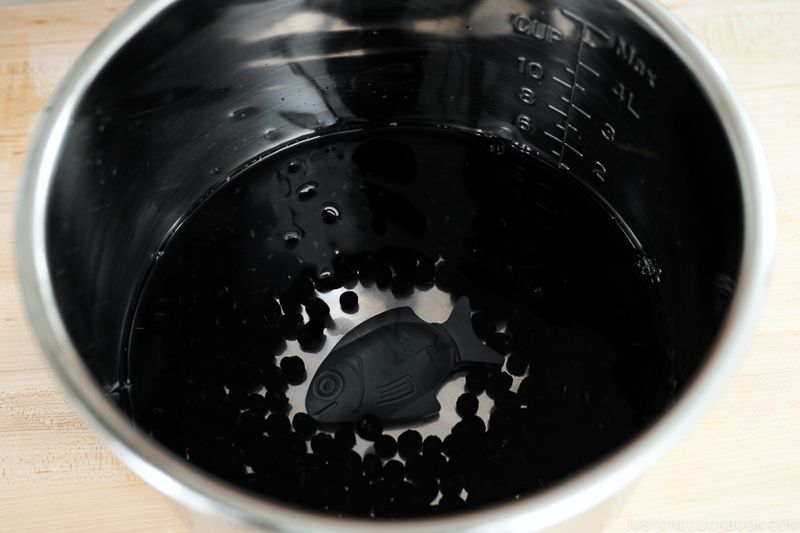
And after 4 hours of soaking, remove the iron fish (Update on 12/31/19: I kept the iron fish and pressure cook in the Instant Pot, and it was fine. I recommend leaving it in the pot.) Check out the color of the water. It turns completely black! Now you can proceed to cook the black soybeans.
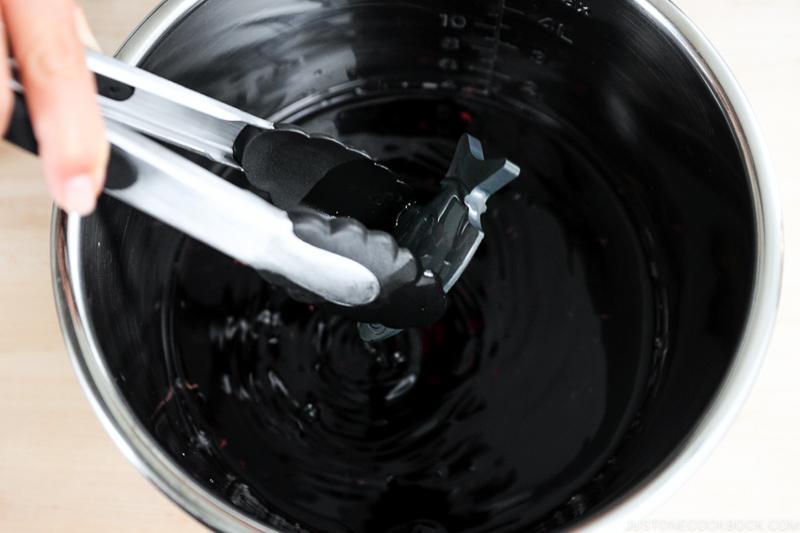
After pressure cooking, here is the final result of the kuromame.
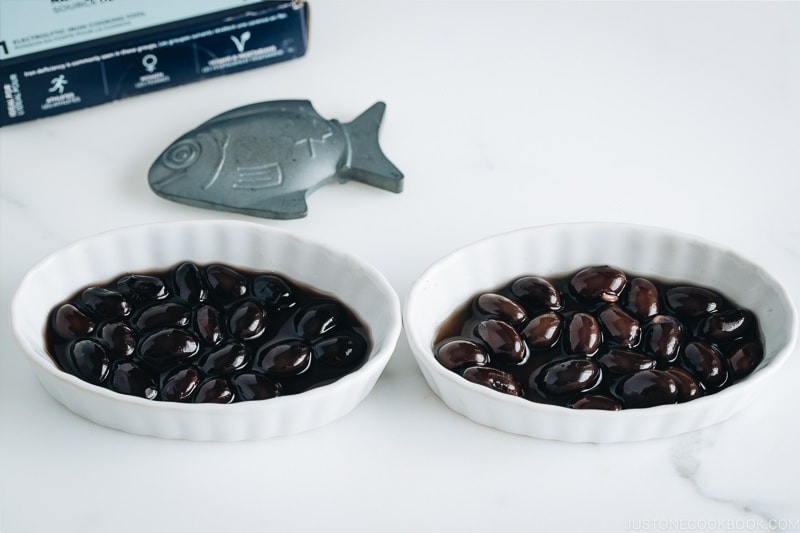
The result is pretty obvious. How about the taste? Whether you use the Lucky Iron Fish or not, they taste the same. What if you add the Lucky Iron Fish after cooking, does it become darker? No, it doesn’t become darker. It’s too late to rectify the color.
Now is it worth $30 for buying the lucky fish? It might be good for you if you…
- make kuromame every year for the Japanese New Year.
- need to impress your mother, mother-in-law, or Japanese guests who appreciate the beautiful black kuromame.
- have someone who lacks iron in their diet and takes a supplement. You can cook other food with iron fish.
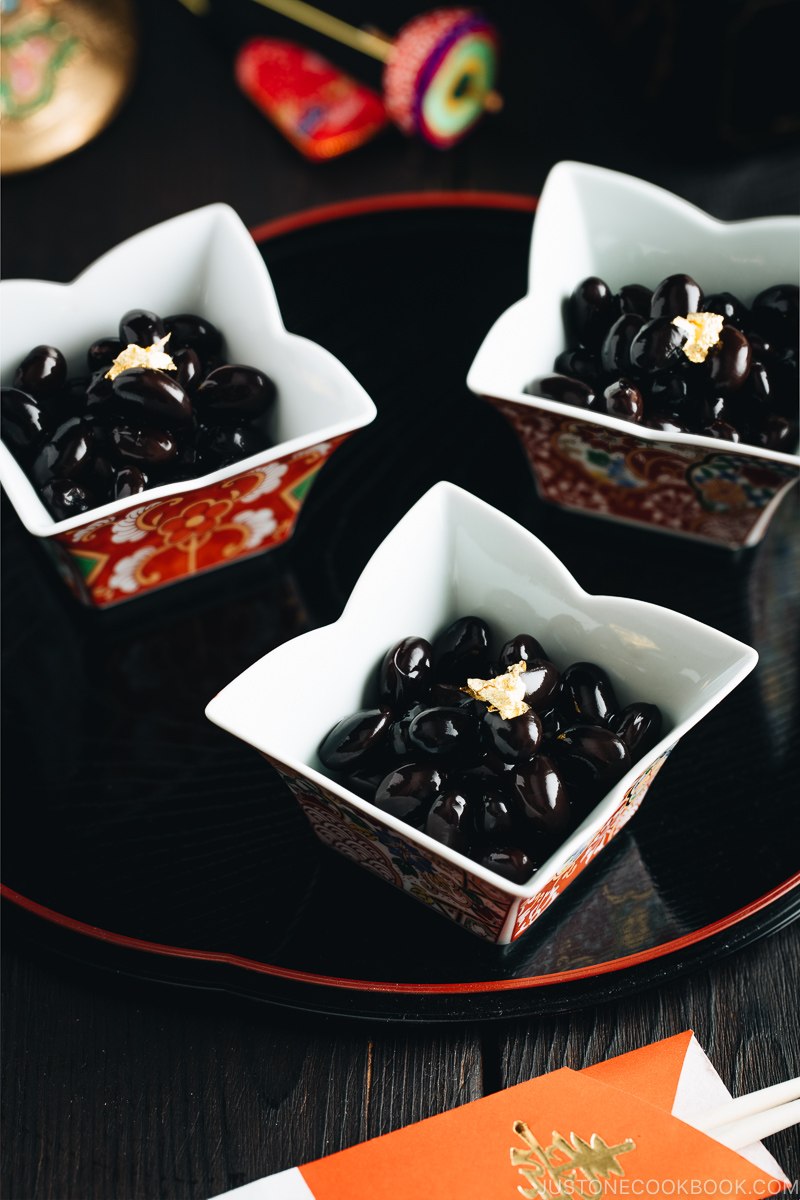
Don’t Have an Instant Pot or Pressure Cooker?
Don’t worry! I have the recipe for cooking kuromame in a pot on the stovetop. I learned that kuromame cooked on the stovetop with the iron fish actually has a richer color than kuromame cooked in the Instant Pot with the iron fish.
I hope you will include kuromame in your osechi menu. Here’s to good health and happiness!
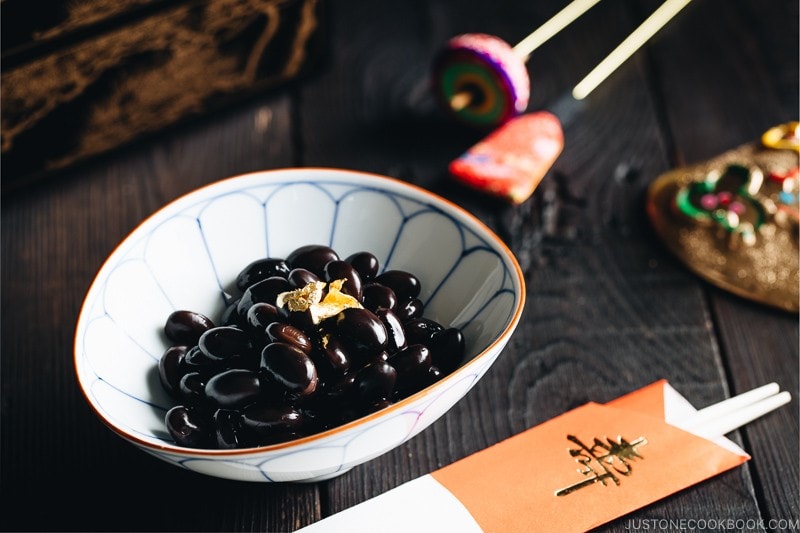
Wish to learn more about Japanese cooking? Sign up for our free newsletter to receive cooking tips & recipe updates! And stay in touch with me on Facebook, Pinterest, YouTube, and Instagram.
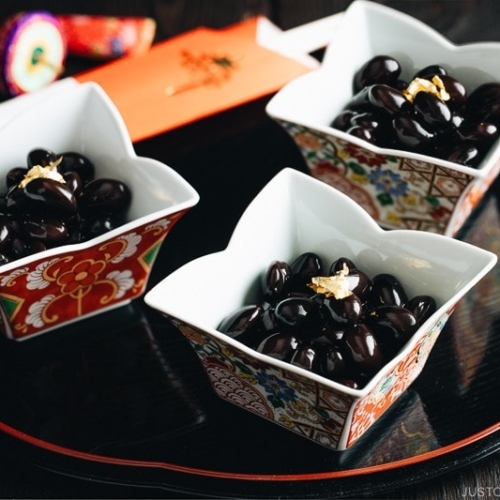
Instant Pot Kuromame
Video
Ingredients
- 8.8 oz kuromame (black soybeans) (dried)
- 4 cups water
- 1 cup sugar (7 oz; adjust the sweetness to your liking; typically, the ratio of black soybeans, sugar, and water is 1 to 1 to 6 by weight)
- 2½ tsp soy sauce
- ½ tsp Diamond Crystal kosher salt
For the Garnish
- edible gold leaf flakes (optional)
Instructions
Before You Start…
- Please note that this recipe requires a minimum soaking time of 4 hours for the dried beans; I also recommend a resting time of 8 hours once cooked, but this is not required. Please read and follow the package instructions for your black soybeans. My package directions say to soak for 4–5 hours, so I soaked them for 4 hours. For testing purposes, I tried soaking the same brand of soybeans overnight, and they came out a bit too soft. You may need to test to see how long you want to soak your soybeans.
- I recommend making this recipe 1–3 days before you plan to serve. For more helpful tips on planning your Japanese New Year feast, please read my A 5-Day Osechi Cooking Timeline blog post.
- Gather all the ingredients.

To Soak the Soybeans
- Gently rinse 8.8 oz kuromame (black soybeans) under cold running water. The skins are very fragile, so handle with care. Some beans have skin that is partially peeled off, but you can use those in this recipe. Discard any damaged soybeans. Drain well.

- Put the soybeans in the inner pot of an Instant Pot. Add 4 cups water to the pot. Depending on your package instructions, soak the soybeans for 4 hours or overnight on the counter in the wintertime (or in the refrigerator in the summertime and in warm climates).

- To enhance the color of the soybeans, we use rusty iron nails or Lucky Iron Fish to cook with the soybeans. (Read more in the blog post.) If you use rusty iron nails, clean 2–3 nails and wrap them in cheesecloth. Add the nails or the Iron Fish to the water with the soybeans.

To Cook
- After soaking, put the inner pot back into the Instant Pot (keep the nails or Iron Fish in the pot). Add 1 cup sugar, 2½ tsp soy sauce, and ½ tsp Diamond Crystal kosher salt. Mix gently.

- Close the lid and set to High pressure for 15 minutes (it will take 10 minutes to pressurize). Make sure the steam release handle points to Sealing and not Venting. The float valve will rise when pressurized.

- When it’s finished cooking, the Instant Pot will switch automatically to the Keep Warm mode. Let the pressure release naturally for about 45 minutes. Open the lid and check if the beans are done cooking; they should be tender enough to mash between two fingers. Then, take out the inner pot from the Instant Pot and remove the nails or Iron Fish.

- Pour the cooked soybeans and cooking liquid into a large airtight container. Leave uncovered and let the soybeans cool completely.

To Rest (recommended)
- Once cooled, the Kuromame are ready to eat. To yield a more striking black color and absorb more flavor, cover the container and let the soybeans soak in their cooking liquid for 8 hours or overnight in the refrigerator.

To Serve
- The following day, serve the Kuromame in a bowl without the cooking liquid. You can serve it either chilled or at room temperature. If you'd like to make it more festive, you can garnish it on top with edible gold leaf flakes (optional).

To Store
- Store the Kuromame in an airtight container, with enough cooking liquid to cover them, in the refrigerator for up to 4 days or in the freezer for one month.
To Use the Leftover Cooking Liquid and Kuromame
- You can use the leftover cooking liquid to make Oshiruko (Zenzai), black soybean latte, and jello (using gelatin, agar, or Kanten). You can use the leftover Kuromame to make pound cake and Steamed Cake.
Nutrition
Editor’s Note: This post was originally published on December 25, 2018. It’s been republished in December 2020.
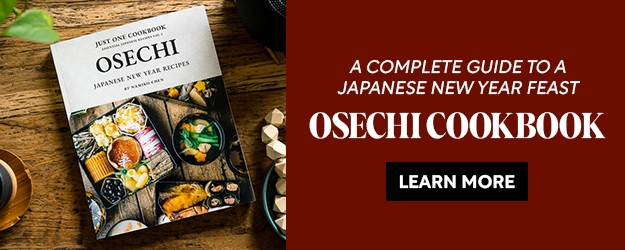
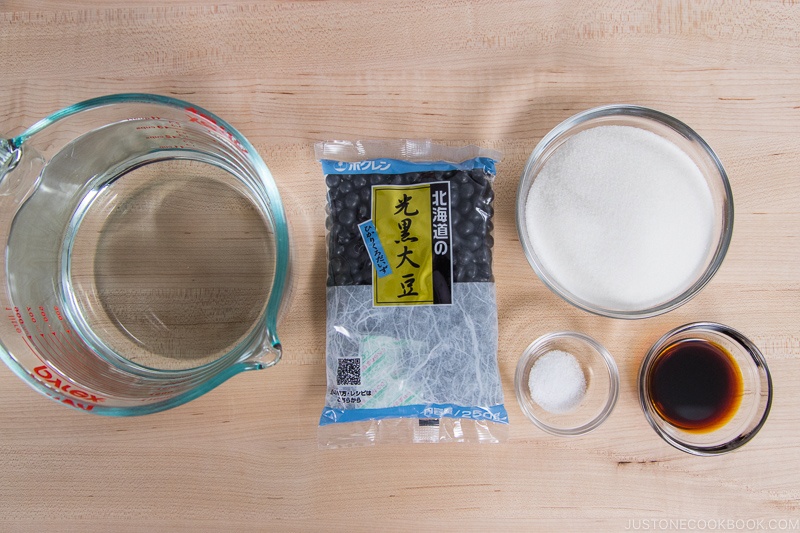
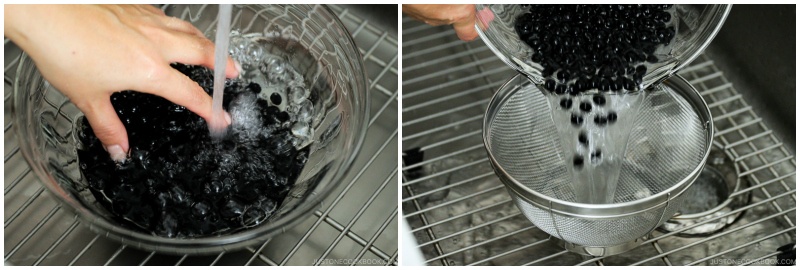
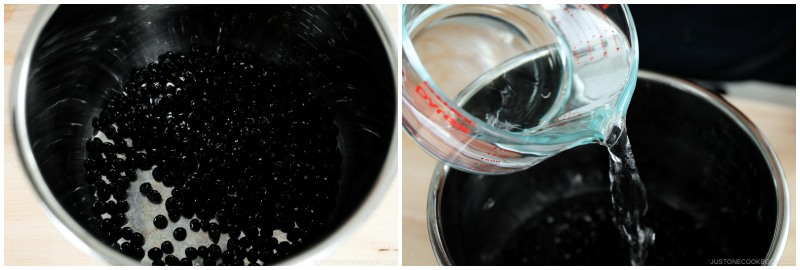
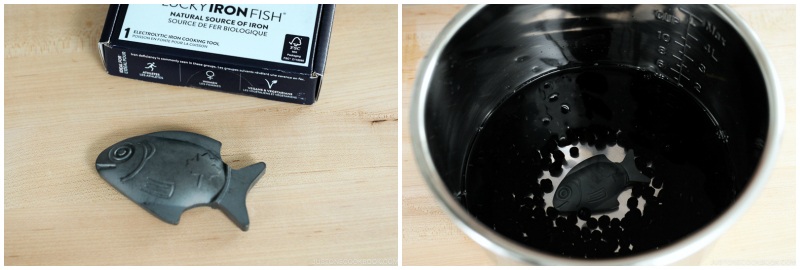

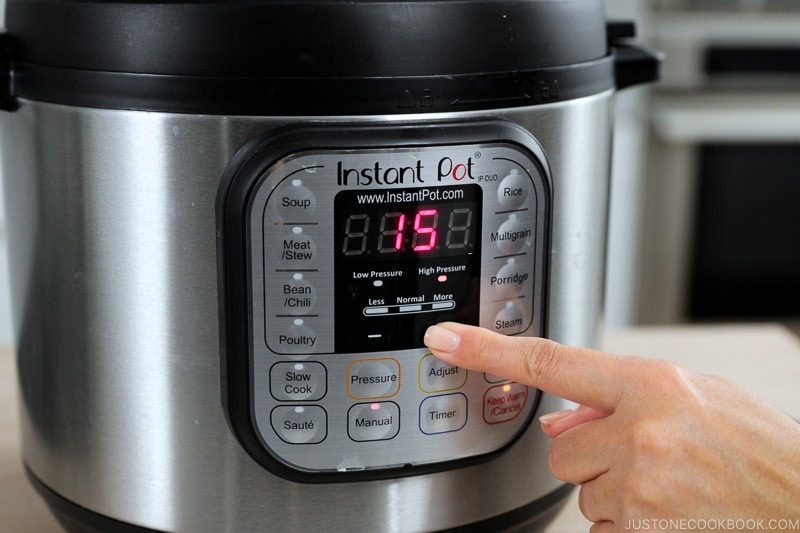
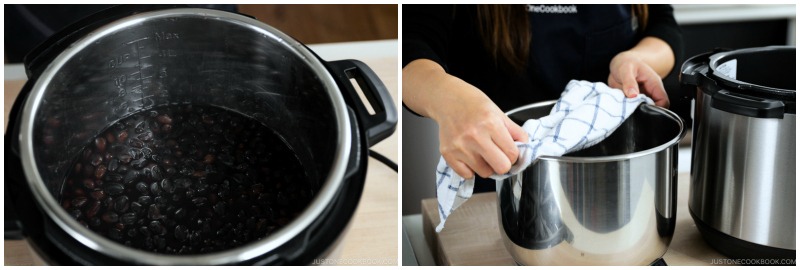
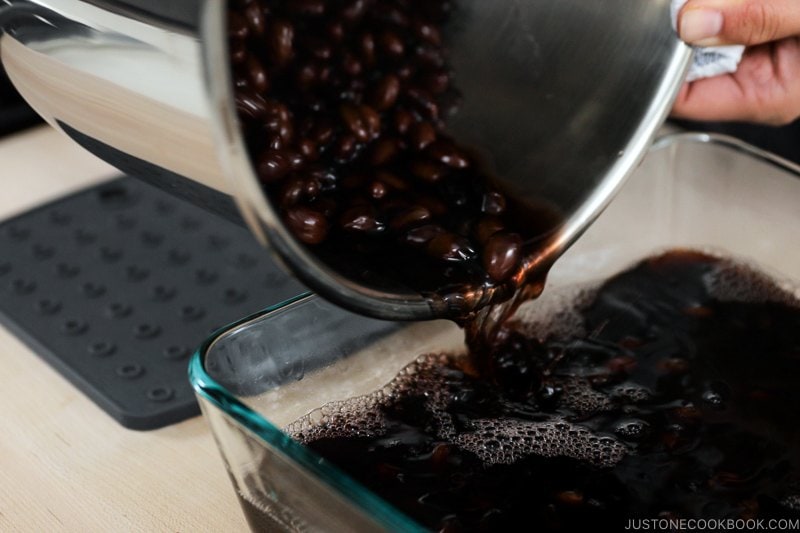
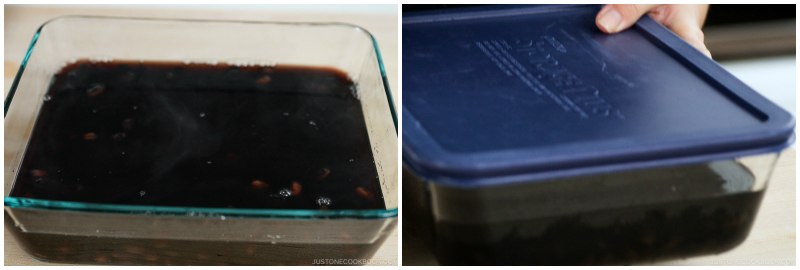











The best! We love kuromame and often buy a small package for about $5. We just made your recipe and not only is it cost effective but it was less sweet than the store-bought kuromame. AND DELICIOUS!
Hi J T! We are so happy to hear you enjoyed Nami’s recipe!
Thank you so much for trying her recipe and sharing your thoughts with us. Happy Cooking! 🤗
These weee delicious! Do you have a recipe for the black soybean latte you suggest that you can make with the leftover liquid? Thanks!
Hi Kat, Thank you so much for trying Nami’s recipe!
We are so happy to hear you enjoyed homemade Kuromame. We don’t have a black soybean latte recipe, but you may add as much as you like to hot milk. Try this ratio: liquid: milk = 2:5.
We hope this helps!
Hi Nami!! I am getting ready for New Year’s and I’m looking for the best black soy beans to make kuromame. I ordered online, but wasn’t really impressed with the selection. I couldn’t find the one you show in this recipe above. Are there on line sources for this, or do I have to go to Nijya or Mitsuwa to find it???
Hi Yosh! Thank you for reading Nami’s post and trying her recipe!
Nami usually gets this package from Nijiya or Mitsuwa (local Japanese grocery stores). In December, high-quality Kuromame arrives in stores from Japan for Osechi making, which we recommend checking out.
We hope this helps!
You might want to check out the Iron Fishes website, they say NOT to use the fish in pressure cookers!
Hi M.N., Thank you very much for reading Nami’s post and checking with us.
According to our research, Iron items like this one might scratch the inner pot of the pressure cooker and are noted not to use. However, we had cooked/tested many times, but we never had problems with this recipe.
We hope this helps!
First time making kuromame and it came out great!! My friend sent me the black soybeans from Japan, but I was surprised that they are hard to find on line. The iron egg really makes the beans super black, and they continued to darken overnight!
Hi Yosh! Thank you very much for reading Nami’s post and trying her recipe!
We are glad to hear iron technic worked very well!😊
I’m so happy to have tried this Instant Pot version of the Kuromame recipe as it saves a lot of time. Instead of making it a couple of days before New Year’s Day, I just did a “trial run” a couple of weeks early just to see how it would come out. Well, it came out nicely so I didn’t need the trial run! In the past, I never really liked the idea of using rusty nails even though I know that it’s what makes the beans attain the most beautiful dark black color. I had not heard of the Lucky Iron Fish before and didn’t even know that this type of product existed to add iron content to food. I considered buying it but also did some research on alternative products. I searched for “rusty nail alternative for kuromame” in Japanese and found a Japanese product similar to the Lucky Iron Fish. I didn’t expect to find it in the US, but I found it on Amazon and the price was considerably lower than the Lucky Iron Fish so I bought it and used that instead. The product I bought is called The Iron Egg and is made by Nambu Ironware (南部鉄 ザ・鉄玉子)and it seemed to accomplish the same task. Not trying to promote a different product here nor can I vouch for the product being just as good but it was more affordable for me.
Hi Catherine! We are so glad to hear the iron method worked well for you!
Thank you very much for trying Nami’s recipe and sharing your experience with us.💝